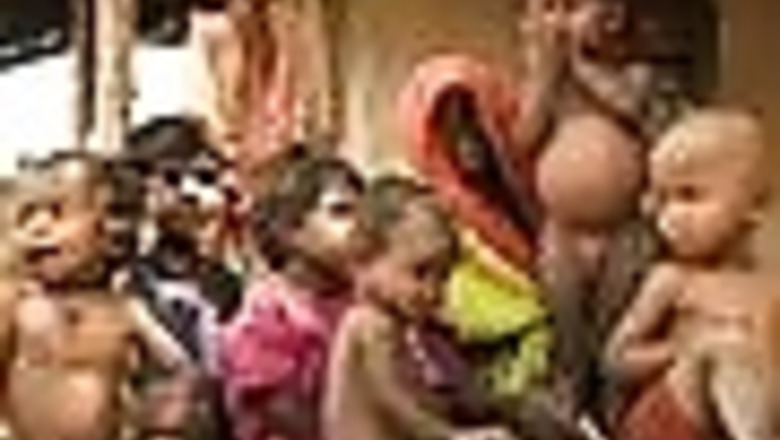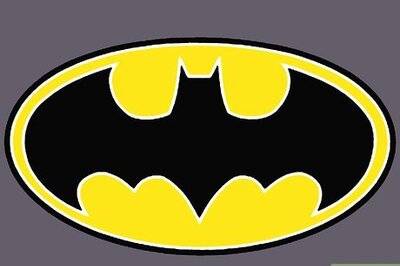
views
The Problem
Thirty Seven Percent.
This single number has got India’s policymakers wringing their hands in agony. It could add at least Rs 1 lakh crore ($ 22 billion) to their estimated bill for providing food grains to the poor under the proposed food security law. It could throw out all the assumptions upon which they had formulated social security schemes for years. And it could make a lot of targets and achievements of various development plans look off the mark.
The number is the latest estimate of the poverty ratio in the country and is a full 10 percentage points higher than what was previously believed. A committee headed by Suresh Tendulkar, noted economist and former chairman of the prime minister’s economic advisory council, made this startling discovery after using an updated methodology for poverty estimation. There is no escaping the fact that the government will have to accept this finding and recalibrate its economic policy.
But there is a bigger problem. We just don’t know who these 37 percent of the people are.
It turns out that the government records have a lot of errors of inclusion and exclusion. Many researchers, including Abusaleh Shariff of the National Council of Applied Economic Research (NCAER), say that 61 percent of all the poor in the country have been left out of the official Below Poverty Line (BPL). On the other hand, 25 percent of those figuring in the lists are not poor.
The reasons are not far to seek. State governments often exaggerate the number of poor people in their regions to get a higher allocation of money for social sector schemes. Families that are politically connected or can bribe local officials get into the lists. The BPL card has become a coveted possession in most of rural India as it opens doors to many welfare schemes.
On the flip side, the really poor get missed out due to social equations in rural areas where the locally powerful groups decide who gets in and who doesn’t.
“It is important to understand the political economy of BPL identification,” says B.K. Sinha, secretary in the ministry of rural development. “The truth is that politicians at the local level derive their support by getting the maximum number of people on the list, whether deserving or not,” he says.
The Central government doesn’t have unlimited resources to satisfy the ever expanding poverty lists and seeks to limit the number of people who will qualify for its assistance. But the states are terrified of the political fallout of such a strategy.

There is only one way to break this stalemate. To use the forthcoming poverty census in 2011 for identifying the really poor people. This will need a sophisticated methodology that is fraud-proof and equitable to the backward sections that haven’t had a voice till now. The good news is, the government has begun that exercise.
The legacy
It is the politicians who got the people used to government subsidies and freebies because it helped their political agenda. Now, it is the same politicians who are trying to contain the genie as the expenses are spiraling out of control and worse, the money is often passing into the hands of the undeserving.
This month, the government is starting a pilot survey in 250 villages across the country to develop a fool-proof method to identify the poor. Once the method is developed, and everyone in the policymaking circuit agrees on the details, it will be implemented through the Census across the nation.
This is the latest instalment in the government’s attempts over the last two decades to identify the poor. The first BPL census was conducted in 1992, with the annual income cut-off set at Rs. 11,000. But the number of families identified as being poor was twice the estimated poverty ratio pegged by the Planning Commission at that time.
Thus in 1997 another poverty census was carried out after dropping the income rule. In any case, it was clear that many families were under-reporting their income to corner the benefits intended for the poor. So this time, consumption was used as the cut-off factor. The other big change in the 1997 census was the incorporation of the “exclusion principle.” It used several parameters — such as ownership of a ceiling fan — to exclude families from the census. It was effective but did not go down well with the population.
Ideally, the link between poverty ratio and the number of people designated as deserving of social welfare should not be a pedantic one and the government must be flexible to include more people in its schemes where necessary. “For instance, in the context of Public Distribution System (PDS), consideration must be given to the fact that the extent of nutritional deprivation in India is much wider than the incidence of poverty,” says Jean Dreze, an Indian economist of Belgian origin who has deeply influence policymaking at the highest level.
However, the government perennially faced a resource crunch and was forced to take a hard look at who could benefit from its assistance and who couldn’t.
Thus, in the 2002 census, the “Score-Based Ranking” methodology was used. Officials recorded the quality of life of each surveyed household based on 13 socio-economic parameters, instead of tracking income or consumption levels.
Further, the government put an unusual caveat; that the number of poor in any state could not exceed the Planning Commission’s estimate. In other words, the state governments, who actually conduct the census, had to choose their cut-off points in such a manner that the final numbers matched the poverty estimate put out by Planning Commission. But it was difficult to get the states to comply and most of them ended up selecting more households than the Centre could handle. That tug-of-war between the states and the Centre hasn’t really ended till date.
The process
In India’s age-old caste system, the most oppressed people are called scheduled castes or Dalits. Even among them, there are communities that are considered hopelessly backward. Musahars are one such community. Primarily engaged in farm labour, Musahars live in the country’s poorest areas in Bihar and Uttar Pradesh. They are so indigent that they have been forced to eat field rats for subsistence.
But 99 percent of the 4 million Musahar people don’t figure in any government poverty list — the same lists that have been unable to stop families that own SUVs and live in the cities from being included.
It is this dilemma that haunted a committee headed by N.C. Saxena, former rural development secretary, when it made a series of recommendations for the calculation of poverty ratio and identification of the poor. Saxena’s findings were even more startling than those of Suresh Tendulkar: It found that 50 percent of Indians are found to be poor if the right metrics are applied.
The Saxena group made far-reaching proposals: 1) any census of the poor should be preceded by identifying people who deserve to be excluded automatically. Examples are families that own cars, mechanised farm equipment or large farming plots; 2) identifying communities that should be included automatically, like Musahars, the homeless and primitive tribal groups; 3) ranking all other families on a scale of one to ten on various parameters. Points would be given for being a landless agricultural labourer, a member of a backward caste, a Muslim or a casual worker. “The rationale was to suggest a method by which the poor would not be excluded. Also, we tried to suggest a method which was simple and easy to implement,” says Saxena.
The newest survey for the identification of the poor will substantially draw from Saxena’s recommendations, though it will also include suggestions from Dreze, who disagrees with the ranking idea. So, the survey is more like an exploration of what works and what doesn’t so that the big Census can be designed accordingly.
However, the biggest change is in the mindset of policymakers as reflected by the Saxena group’s recommendations. They now realise the old system of calculations based on income and consumption has failed. Saxena’s suggestion to use social measurements such as caste is thus a path-breaking idea for them.
The government also plans to validate its results through the so-called Participatory Rural Appraisal technique. This would enable officers to cross-check whether their methods accurately identified the poor in the villages.
The pilot project would also have the flexibility to use separate methods and parameters for different regions in India. “The notion of poverty is complex and relative. People in a canal-irrigated region are in general better off than people in the arid regions of the country,” says Sinha.
The debate
Poverty is essentially an economic concept. The Saxena Committee’s recommendations to use social indicators such as caste to identify the poor are thus a radical shift from earlier wisdom. Naturally, it has its legion of supporters and critics.
The most prominent among the critics is Dreze, also a member of the National Advisory Council. His main objection is to the scoring system based on social factors. “The method is prone to arbitrariness, both in terms of the indicators chosen and the scores assigned. [It also] entails a formidable administrative challenge as well as a major financial burden,” Dreze said in a report to the government.
However, the government’s ability to subsidise is limited. Without scoring, it would be difficult to separate one family from another.
Amitabh Kundu, an economist from Jawaharlal Nehru University, cautions against applying the same criteria across the nation. “India is a very diverse country and the manifestation of poverty is very different… You cannot have the same criteria for both Chhattisgarh and Nagaland,” he says.
Many experts also question using social and religious attributes to define poverty. Identifying a tribal or a single woman or a Muslim as the rightful beneficiary of a particular scheme may be quite justified, but according them a blanket certification of being poor would lead to the same old problems.
Saxena readily accepts the contradiction but defends his choice. “Economic parameters are not easy to identify. Eighty five percent of India is self-employed. Getting accurate income or expenditure data from them is not always possible. So you have to look at proxy indicators which are easily identifiable and which cannot be disputed,” he says.
His statement only shows that the way Indian policymakers look at poverty is undergoing a rapid change. The Suresh Tendulkar report, which revised the poverty ratio to 37 percent, took the view for the first time that lack of access to education and health care is also a factor of poverty. Whatever be the result of the survey, the new thinking is here to stay. And therein lies our hope to really gauge the extent of poverty in India and perhaps even try to eradicate it.


















Comments
0 comment